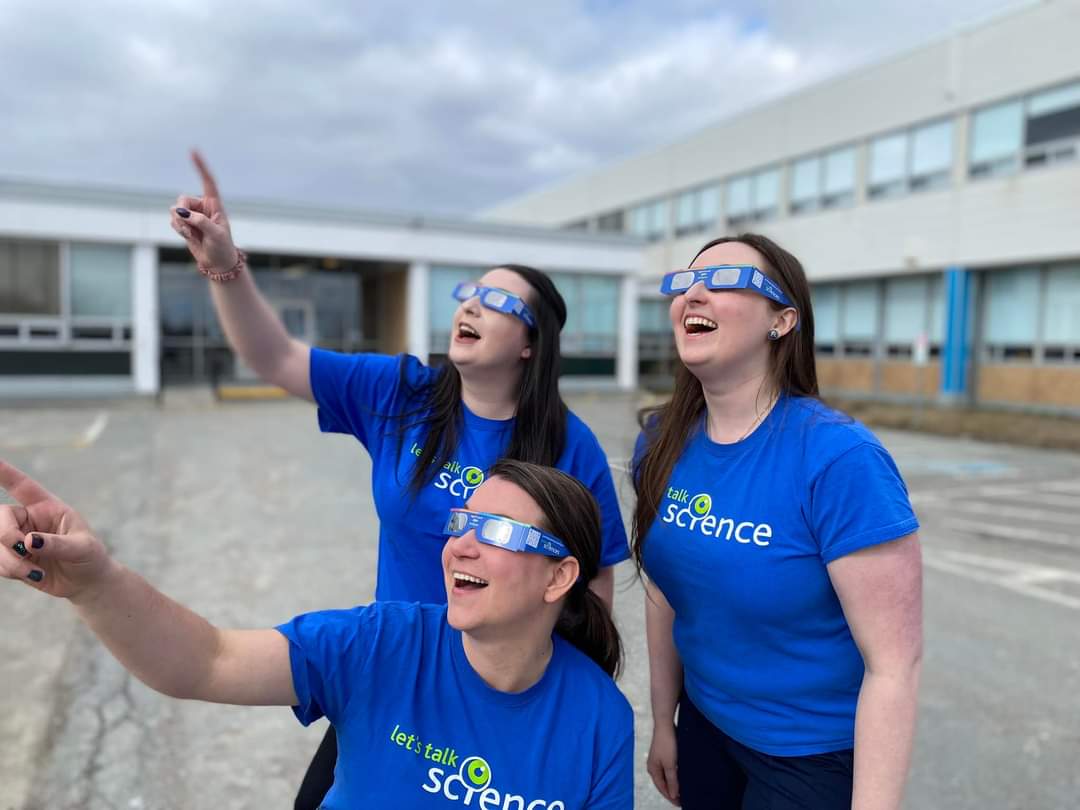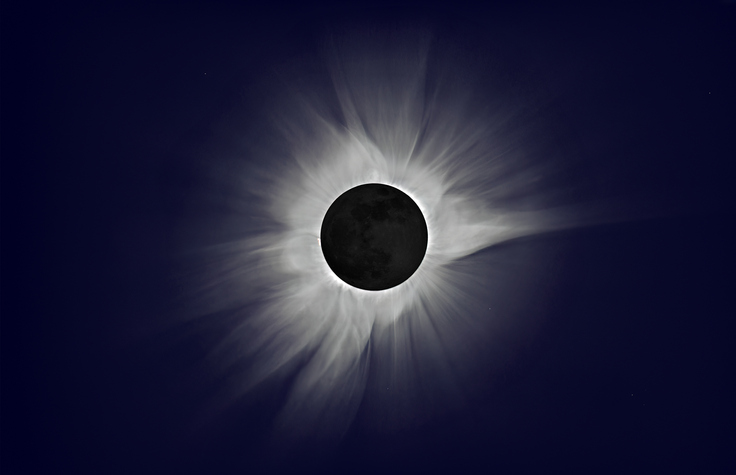On the afternoon of April 8th, 2024, a total solar eclipse passed over parts of eastern Canada, providing a once-in-a-lifetime opportunity for children and adults of all ages to learn and experience something amazing together as a community.
A total solar eclipse occurs when the Moon and Earth are at the ideal points in their orbits for the Moon to completely obscure the Sun for a few moments, casting a shadow on the Earth. This type of eclipse occurs very rarely, often going hundreds of years between occurrences in a specific location.

Let's Talk Science Volunteers and Staff members prepare for the solar eclipse in Gander, NL
Let’s Talk Science sent out 100,000 safety-certified eclipse viewers to schools, community groups, and post-secondary partner sites to enable more people the opportunity for safe eclipse viewing. We also developed many safety resources for teachers and families so that no one would miss out on this amazing experience. Teaching young people about safety measures not only safeguards their physical well-being, but also reinforces the importance of responsible scientific engagement and enables them to participate more fully in fantastic scientific opportunities.
Leading up to the eclipse, there was an overwhelming amount of information, and disinformation, being shared about safety concerns in relation to watching the eclipse. The public’s somewhat hesitant and fearful response was a reminder of the importance of nurturing scientific literacy. Let’s Talk Science believes in cultivating a mindset that embraces critical thinking, inquiry, and evidence-based reasoning. By instilling these skills, we equip the next generation to confront challenges, embrace opportunities, and forge a brighter future grounded in knowledge and understanding.
An event of this magnitude captivates people of all ages and backgrounds, prompting questions and sparking curiosity about the workings of the universe. Why does the eclipse occur? What are the mechanics behind it? How do scientists predict and study such phenomena? Encouraging youth to explore these questions not only satisfies their innate curiosity but also instills in them a deeper appreciation for the natural world.

The sun's corona is only visible during a total solar eclipse
Total eclipses, in particular, have driven many scientific discoveries, helping scientists decipher the sun’s structure and explosive events, finding evidence for the theory of general relativity, and discovering a new element, among other things. Scientists continue to make discoveries by observing total eclipses. They enable them to see a part of the sun’s atmosphere, the corona, that is too faint to see except when the light of the sun is fully blocked by the moon.
Events like the solar eclipse can also serve as catalysts for cross-curricular learning, bridging the gap between science and other fields of study. For instance, students can delve into the cultural significance of eclipses in different societies, explore the historical methods used to predict them or examine the environmental impacts of such phenomena on Earth.
Ultimately, the importance of scientific literacy for youth extends far beyond the classroom. It is a fundamental building block for personal empowerment, intellectual curiosity, and societal progress. It not only enables youth to marvel at the wonders of the universe, it also empowers them to navigate the complexities of the modern world with confidence and safety. Events like the solar eclipse serve as reminders of the boundless opportunities for exploration and discovery that await those who care to look.
As we nurture the next generation of scientists, innovators, and informed citizens, let us strive to cultivate a culture where every young mind has the opportunity to reach for the stars and unlock the mysteries of the universe.